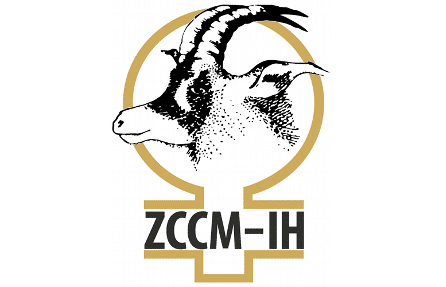
Zambia plans to review the mining policy before the end of this year to trigger increased economic growth that will culminate into the country attaining a middle income status by the year 2030, says mines energy and water development minister, Christopher Yaluma.
Yaluma says plans are underway to revise the Mines and Minerals Act number 7 of 2008 to facilitate increased growth in the mining industry and trigger growth in other sectors including transport and energy that remain stifled.
Speaking during the ministerial forum at the 20th Mining Indaba in Cape Town, South Africa, Wednesday, Yaluma said the principal legislation governing the mining industry has been the mines and minerals development act no.7 of 2008 based on government’s commitment to apply modern principles of transparency and accountability in the management of mineral resources.
The Act. broadly deals with licensing and regulation of mining activities and is currently being reviewed to ensure a balance that will create a competitive environment thriving on a sustainable mining industry to benefit Zambians while concurrently rewarding investors.
The revision of the Act will seek to address various challenges being faced in the sector including redressing unnecessary bureaucracy in the issuance of mining rights as well as reviewing the inadequate size and duration of prospecting licences.
It will also seek to redress the appeal procedures and also seek to retain a tenement in situations where progression to mine development becomes impossible because of adverse economic conditions or technological constraints.
Yaluma noted that although mining has been the engine of Zambia’s economic growth development active since the 1930s, the Government has been pursuing policies and implementing measures to grow the industry and enhance its contributions to economic development.
This growth in the mining sector is not possible without a proper policy and regulatory framework which government has put in place.
Zambia has an articulate policy on mining which was adopted recently and aims at ensuring an ideal environment to encourage private investment in the exploration and exploitation of minerals.
Through the .policy, government aims to ensure the development of a profitable mining industry contributing to the sustainable development of the country.
In that set up, the role of government remains that of ensuring an enabling environment for the development of a vibrant and orderly mining industry contributing to the economic development of the country.
Over the years, the country has recorded increased exploration and mining activities which demonstrates the country’s untapped mineral potential and favoutable investment climate.
Giving an outlook of the investment climate for mining in Zambia in Zambia, Yaluma said in the past few years a number of expansion projects at existing mines have taken place necessitating the establishment of new mines resulting in the increased mineral production.
Copper production by large scale mines in the past three years rose by eight percent from 677,604 tonnes in 2011 to 759,784 tonnes in 2013 and it is projected to increase to one million when the Sentinel project at Kansanshi mine, a unit of First Quantum Minerals Limited comes on stream in 2015.
While planning to improve the policy and legal framework the government further seeks to implement programmes in other sectors to support the growth of the mining industry.
“It is a known fact that the mining industry cannot grow to an extent of making significant contribution to economic development if the necessary infrastructure is not in place. inadequate infrastructure (energy and transport) is one of the factors affecting the development of the mining industry.” Said Yaluma
In redressing the challenges of inadequate power supply in the country, the Government is undertaking various projects to increase power generation capacity by 1,500 megawatts by next year which include upgrading and constructing various power projects.
These include upgrading and extending the Kariba North Bank power capacity to 360 megawatts, construction of the 750 megawatt Kafue Gorge Lower hydro power plant which is critical for the provision of adequate energy in Zambia and the Southern African Power Pool (SAPP).
The Government wants to finalise the construction of the 120 megawatt Ithezi Thezi hydro power project and finalizing of the 300-900 megawatt thermal power plant being pursued by Maamba Collieries Limited.
It is the Government’s desire to create a vibrant mining industry that will make significant contributions and assist the country turn into a prosperous middle income state by 2030.
This is envisioned to be done through the creation of a well organized public private partnership driven mining sector that will also contribute about 20 percent of Gross Domestic Product (GDP) and also provide a platform for sustainable economic growth for the country.
To achieve these goals, the Government seeks to establish new large scale mining operations, given the vast mineral wealth the country is endowed with through intensified explorations for the development of large scale mining operations and create employment and business opportunities while contributing to wealth creation.
This will largely be achieved through tapping into the vast amounts of metallic and industrial minerals that include gemstones and other energy resources including coal, oil, gas and uranium.
It is Government’s desire to further promote value addition to the mining industry to enhance benefits from mineral resources, given the considerable investment in the area.
It is estimated that only one percent of the copper produced from the mining industry is utilized in the manufacturing sector with the rest being exported in unprocessed form.
In the gemstone sector, the value chain of mining lapidary jewellery offers an opportunity for investment and that currently only few small lapidaries exist cut and polished gemstones would significantly contribute to export earnings and employment generation.
Furthermore, there are abundant occurrences of industrial minerals and dimension stones that provide a basis for setting up of value addition industries, Yaluma added.
He revealed that 40 –percent of the country is geologically mapped at a scale of 1;100,000, implying that there are unknown potential.and that investing in the area can lead to opportunities for exploration for various minerals which will eventually result in development of new mines.
The exploration for oil and gas is also Government’s desire to encourage investment particularly the petroleum potential which has remained untapped in Zambia.
The Government, basing on the results of the preliminary work conducted, has demarcated the country into blocks. Some of the petroleum blocks, which were reserved for government. were allocated with nine licences and were given to successful bidders.
On value addition, the Government is encouraging the setting up of smelting facilities to process manganese into ferromanganese.
Yaluma reiterated the Government’s desire to encourage more investment into the country, given Zambia’s stable investment destination coupled with good mining sector regulations that offers vast investment opportunities ranging from exploration to value addition. to a serious investors in mining.
“Zambia is generally a low-risk investment destination and has attracted significant foreign investment in the recent past.” Yaluma said.
“You are all welcome to investment in the mining sector in Zambia and partner with government to translate the mineral resources into wealth for all.”
He commended organizers of the mining indaba for their efforts noting that the event had come at an opportune time considering the level of mining activities taking place in various parts of the continent.
